Review: Apple Watch Series 10, Larger, Thinner, Easier to Read
Posted on
by
Kirk McElhearn
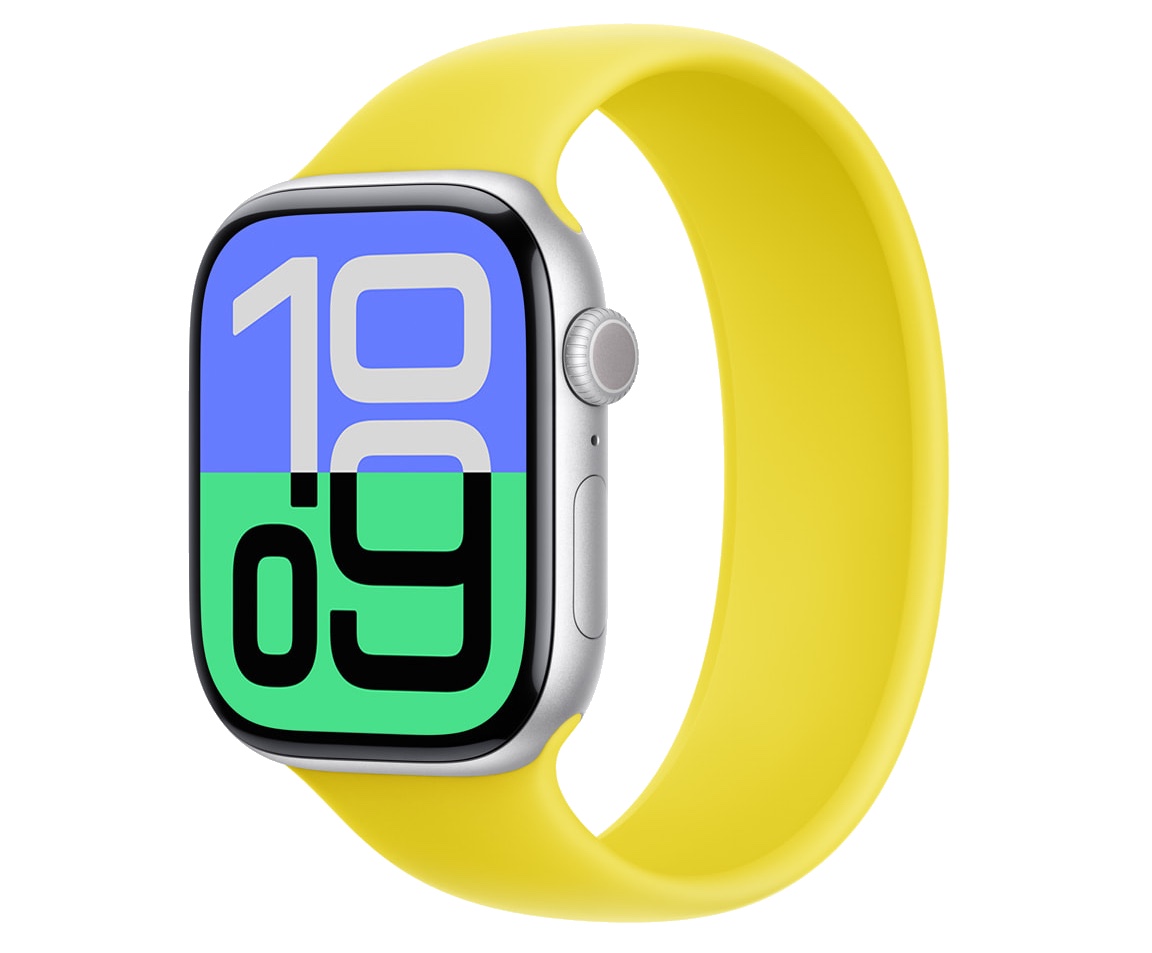
When Apple presents a new model of the Apple Watch, there aren’t that many compelling features to incite users to upgrade their existing watches. Unlike iPhones that get upgraded every couple of years, many people keep an Apple Watch for longer than that. It’s not uncommon for Apple Watch owners to keep their device for as long as it’s still functioning.
Most reviews compare the latest Apple Watch to the previous model. Since it’s likely that many people upgrading an Apple Watch skip one or several generations, comparisons to the previous model ignore all the features they’ve missed on the versions in between their current version and the latest model.
So in this review, I’ll look at the new Apple Watch and highlight the improvements and features it offers compared not just to last year’s Series 9, but also to older Apple Watch models.
Top-line features of the Series 10
The thinnest Apple Watch ever, with our biggest display.
The case sizes of the Apple Watch have been slowly increasing since the first version, and the Apple Watch Series 10 is the largest Apple Watch Series model ever, up 1mm from the Series 9. Its display is marginally larger than that of the 49mm Apple Watch Ultra.
Apple Watch sizes, measured in the height of the case:
Series 0, 1, 2, 3: 38mm & 42mm
Series 4, 5, 6: 40mm & 44mm
Series 7, 8, 9: 41mm & 45mm
Series 10: 42m & 46mm
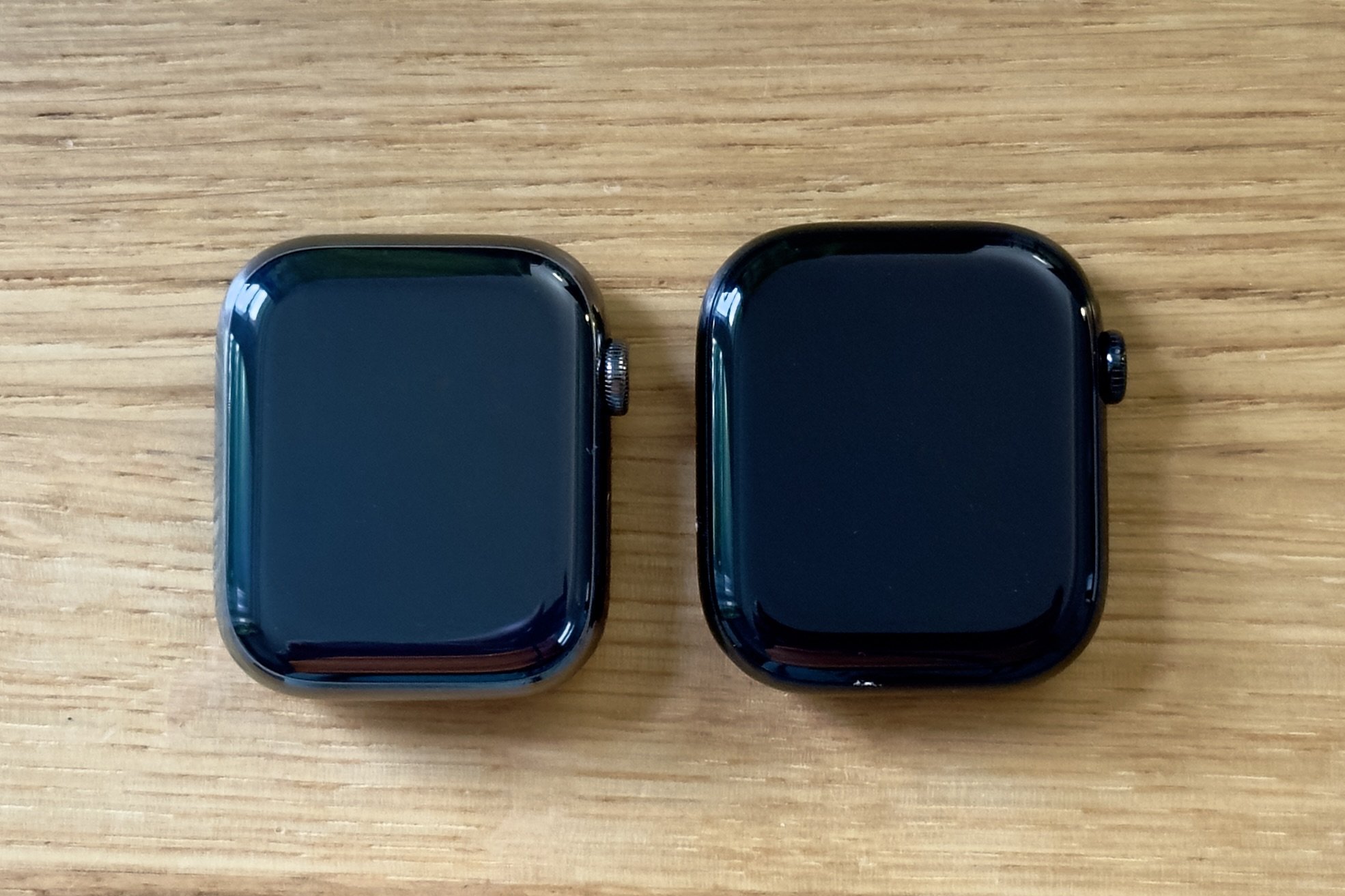
(Left: Series 8. Right: Series 10)
The smallest Series 10 is the size of the largest early Apple Watch models, showing that the original displays were just too small to be practical. The increased case size means that the displays are about 7% (46mm) and 9% (42mm) larger than the equivalent sizes of the Series 7, 8, and 9. This makes more difference than it may seem on paper. Not only is the text larger, but it also seems crisper than before, and easier to read.
If you’re updating from a Series 4, 5, or 6, that 2mm difference means that you’ll have 25–30% more display than those models. Part of this is because more recent watches have smaller bezels, and the overall difference makes the watch much more usable. However, if you have a small wrist, you may find that even the small Series 10 is too large.
The reduced thickness, about 1mm, also makes a difference, though your mileage may vary. Previous Apple Watch Series models have been from 10.5mm (Series 1) to 11.4mm (Series 2 & 3) thick, and from the Series 4 to the Series 9, they were 10.7mm thick. Now at 9.7mm, you may find that it fits under a cuff more easily, and the combination of the larger case size and thinner body makes it look a bit less bulky. But this is not a radical change, such as when Apple introduced the MacBook Air.
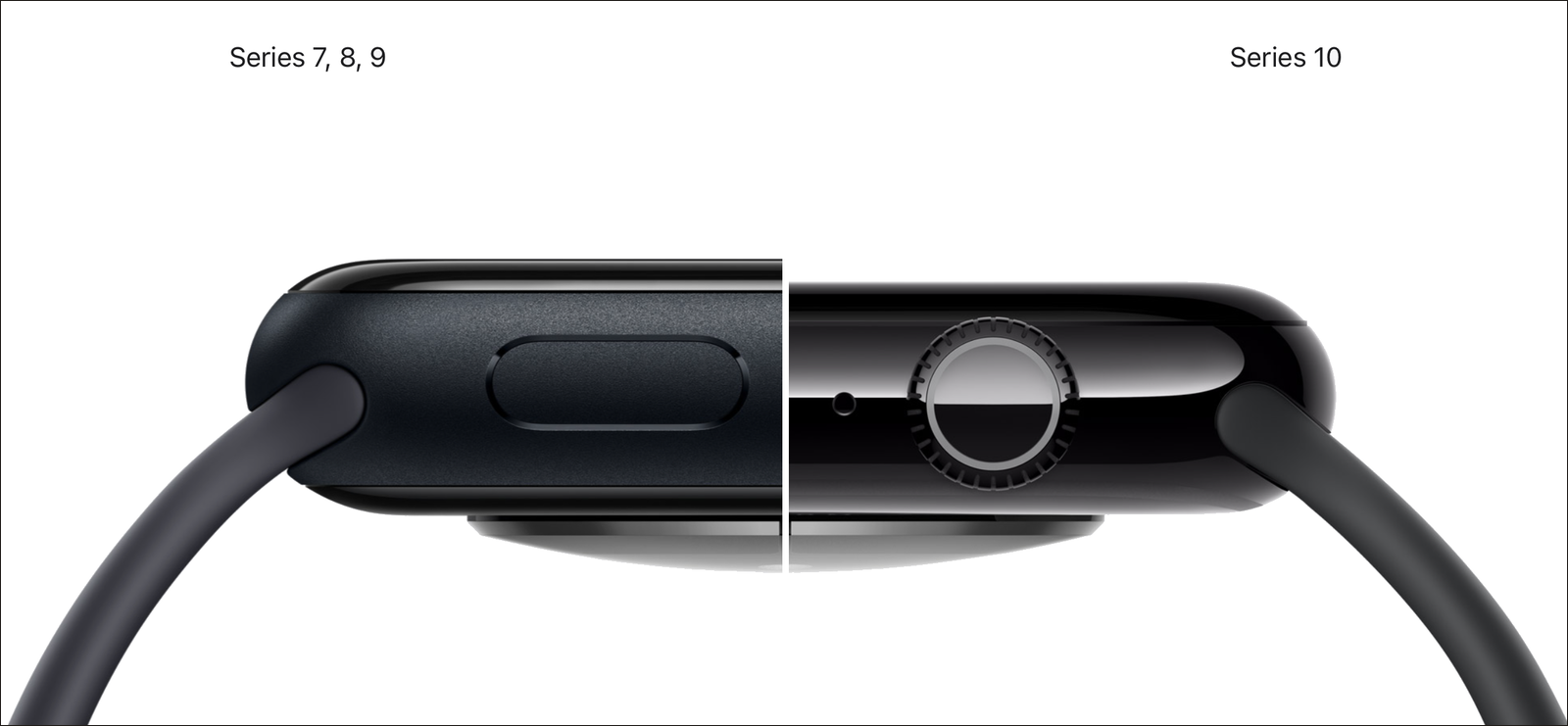
Apple’s first wide-angle OLED Display
Since you rarely look at your watch straight on, this new display means that when you’re looking at your Apple Watch at an angle it’s easier to see what it’s displaying. You don’t have to rotate your wrist as much to get a good view of the display, and the improvement is noticeable.

If you’re upgrading from an Apple Watch older than the Series 9, you’ll also get an increase in brightness. The Series 9 and 10 have 2,000 nits of brightness; older models offer 1,000 nits. (The Series 1 was an outlier with a mere 450 nits.) As a comparison, the most recent iPhones have displays that go up to 2,000 nits outdoors.
As with other recent models since the Series 5, the Series 10 has an always-on display. One improvement allows the watch to refresh more often when in always-on mode, but when your wrist isn’t raised. Previously, the watch refreshed once per minute; now it refreshes once per second, so you can even see a second hand move when the watch is dimmed, and this doesn’t diminish the 18-hour battery life of the watch.
The aspect ratio of the display is also a bit squarer; in other words, you get a bit more width to the display, in relation to the added size in height. This is minimal, yet noticeable. (Calculation below using the new Math Notes feature in macOS Sequoia.)
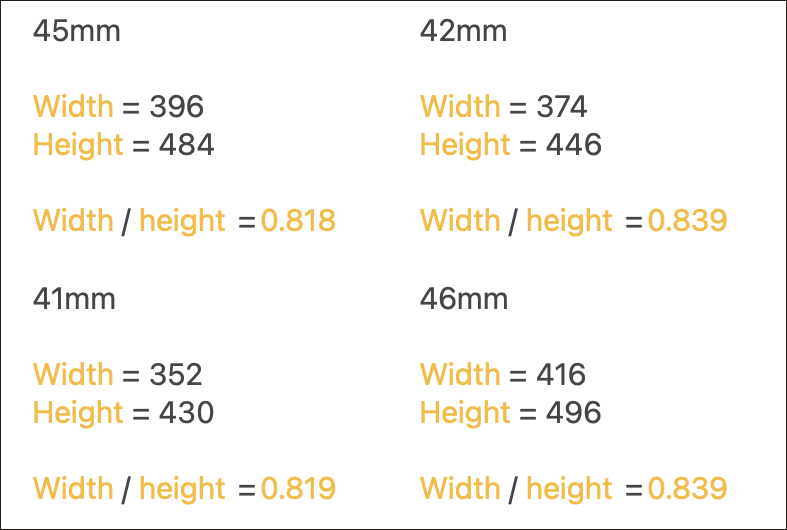
Other new features
One interesting feature is the presence of a speaker on the Series 10. Previous Apple Watch models had small speakers for Siri, alerts, and phone calls, but the speaker is now designed so you can listen to media, such as music or podcasts. At peak loudness, in a quiet environment, you can hear music and spoken word content fairly well. If you’re outdoors, this is more difficult. I tried listening to music and podcasts while walking by my home, which is in a quiet, rural area. I could hear music faintly, but I couldn’t hear a podcast well enough to follow it. And if you’re wearing a long-sleeve shirt or a jacket, the audio is muffled, so don’t expect to hear much at all. It seems like this speaker is designed to be used with your wrists on a keyboard, or lying in bed, rather than with your arms at your side when walking.
As part of watchOS 11, the Series 10, along with the Series 9 and Apple Watch Ultra 2, can provide sleep apnea detection. Notable in the US is the removal of the blood oxygen feature, due to a patent dispute that Apple still hasn’t resolved. If you depend on this feature, then you’ll lose it if you upgrade.
The Series 10 charges faster than ever. Apple spoke of fast charging on the Series 7, 8, & 9, saying it would charge to 80% in 45 minutes. The Series 10 claims to do this in just 30 minutes.
There are also new water sports features: the Series 10 can detect water temperature and depth, in the new Depth app which is part of watchOS 11.
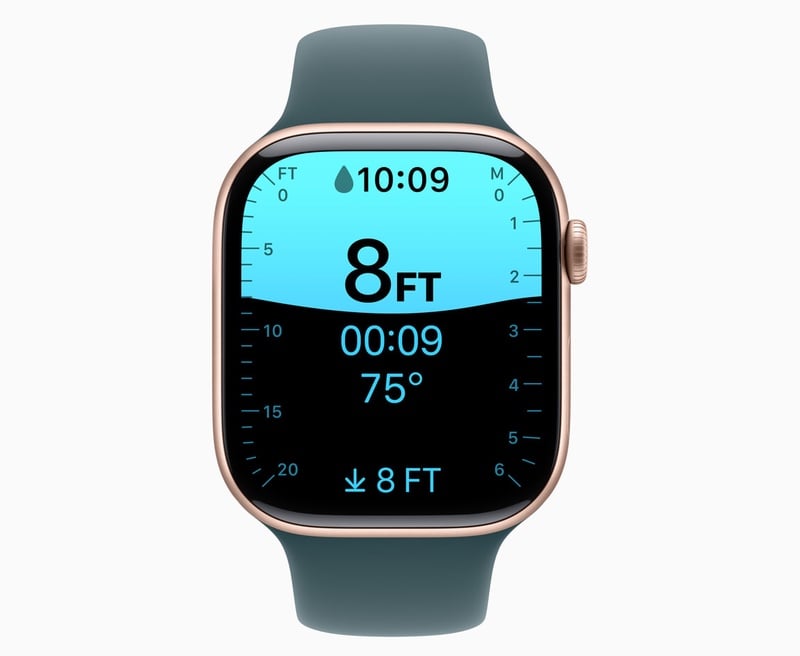
If you’re upgrading from an Apple Watch older than the Series 9, you’ll also benefit from on-device Siri and a double-tap gesture, which allows you to dismiss dialogs and alerts by double-tapping your thumb and index finger. And Apple Watches older than Series 6 can’t run the new watchOS 11, so this could be a good time to upgrade your watch, if it’s a Series 5 or older, to get its new features.
Where is Apple Intelligence?
Apple talked a lot about its new Apple intelligence features when presenting the iPhone 16 and iPhone 16 Pro. But they have said nothing about these features and the Apple Watch. Upgrading to the Apple Watch Series 10 will not, as far as we know today, allow the watch to access any of these features, either directly or through communication with an iPhone.
Apple Watch Series 10 models
The aluminum Apple Watch Series 10 is available in silver, rose gold, and a snazzy new polished jet black finish, similar to that of the iPhone X. It starts at $399 and $429. Titanium cases make a return, replacing the stainless steel models available on the Series 2 to Series 9. (Apple previously offered titanium cases, alongside stainless steel, on the Series 5, 6, and 7.) These start at $699 and $749, in polished natural, gold, and slate colors.
Apple has also refreshed its Apple Watch band offering; we cover all available bands in The Complete Guide to Apple Watch Bands in 2024: Sizing, Styles, and More.
The Apple Watch Series 10 is a solid upgrade if you’re replacing a model that’s more than a couple of years old. Unless you really want the larger display, there’s not much difference with the Series 9. You can use the Apple Watch Compare page on Apple’s website to compare your current model to the Series 10 to see what features you’d gain by upgrading.